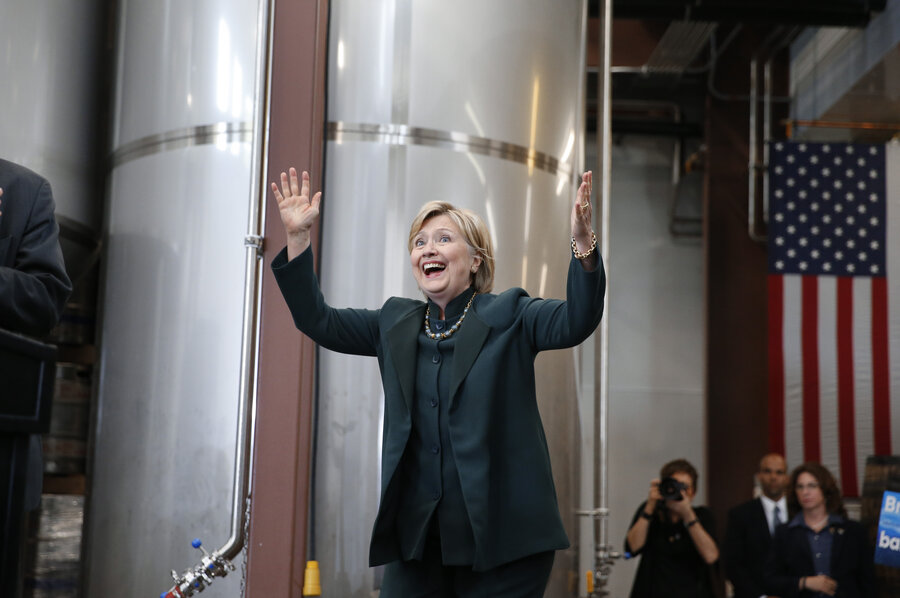Clinton might lose to average Republican. But to Trump?
Loading...
Hillary Clinton (or Bernie Sanders, if he pulls off a miracle comeback) might well lose to a generic Republican presidential nominee.
That’s what the current fundamentals indicate, in any case. By “fundamentals” we mean the state of the economy, the incumbent president’s approval ratings, and the length of time the president’s party has held the White House. Political scientists have long believed such statistical factors have a powerful influence on presidential election outcomes, candidates aside.
In general the 2016 fundamentals indicate that the election should be very close. The economy is doing better, which is good for the Democrats, but not really that much better, which is good for the GOP. President Obama’s poll numbers are not great, a plus for Republicans, but are trending upwards, which would be helpful to the Democratic nominee.
And, of course, Mr. Obama has served two terms. That probably helps the GOP’s prospects for the fall, because US voters often think that after eight years of one party in the White House, it’s time for a change.
Crunch all this together and the Republican Party should have about a 60 percent chance of winning the election, George Washington University associate political scientist John Sides wrote Wednesday in the Washington Post’s Monkey Cage political blog. (That’s assuming current trends hold.)
Other political scientists predict a closer vote – a statistical tie or slight Democratic edge. It depends how you mix the fundamentals together, and how heavily you emphasize each.
Of course, this year the GOP’s presumptive nominee is anything but average. Donald Trump is no one’s idea of a generic anything. He’s sui generis.
There’s no way to fit a disruptive Trumpian variable into tidy academic forecasting equations. For simplicity’s sake they assume average party representatives win nominations, the equivalent of the “replacement player” benchmark used to rate the value of baseball players.
In 2012, Mitt Romney was pretty much the definition of a GOP “replacement player.”
So how does Mr. Trump skew the forecast numbers? Well, we could look at polls. The RealClearPolitics rolling average of head-to-head Clinton-Trump matchups has former Secretary of State Clinton up by about 6.5 points. But general election polls are just barely predictive at this point.
Betting-based markets are harsher. Election Betting Odds, a site associated with Fox News host John Stossel, gives Clinton a 71 percent chance of winning the presidency. Trump gets 27 percent. PredictWise, which aggregates a number of prediction and betting markets, gives the Democratic nominee a 70 percent chance of victory, and the Republican a 30 percent chance.
Look, things could change. Trump could run a really effective campaign and the polls and prediction numbers would tighten. They’re not set in concrete.
But the fundamentals indicate the GOP should win or come close in 2016. If it doesn’t, it will be because Trump has proved to be less like Babe Ruth or Ted Williams than like Mario Mendoza, a former Pittsburgh Pirate so far below replacement level that a modern player would have to bat less than a .200 average to be beneath the “Mendoza Line.” (Only 17 major leaguers are below that level at this point in the season.)








